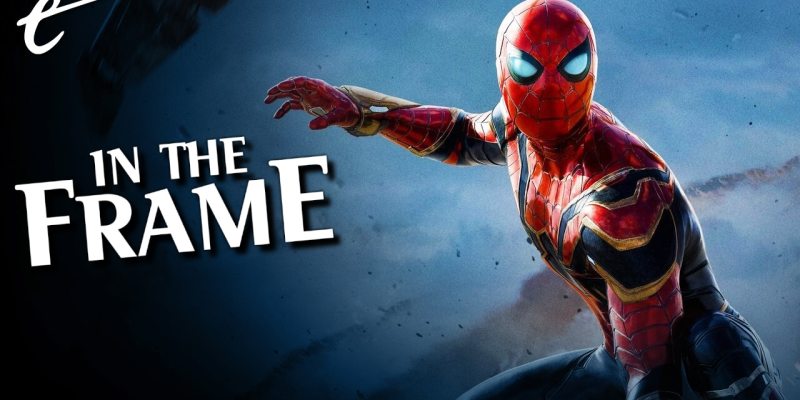Last week, producer Amy Pascal revealed that actor Tom Holland is in the Spider-Man suit for the long haul in the Marvel Cinematic Universe (MCU).
“This is not the last movie that we are going to make with Marvel — [this is not] the last Spider-Man movie,” Pascal told Fandango. “We are getting ready to make the next Spider-Man movie with Tom Holland and Marvel. We’re thinking of this as three films, and now we’re going to go onto the next three. This is not the last of our MCU movies.” This is not a surprise, given Sony’s commitment to expanding its Spider-Man brand, even building a largely (to this point) Spider-Man-free shared universe.
That might be news to actor Tom Holland. “Maybe it is time for me to move on,” Holland recently admitted to GQ. “Maybe what’s best for Spider-Man is that they do a Miles Morales film. I have to take Peter Parker into account as well, because he is an important part of my life. If I’m playing Spider-Man after I’m 30, I’ve done something wrong.” If rumors of their return are true, that’s also perhaps a playful joke about returning Spider-Men Tobey Maguire (46) and Andrew Garfield (38).
If Pascal is to be taken at her word, this is an interesting development. Were Holland to headline “the next three” films in Sony Pictures’ Spider-Man franchise, that would make him easily the most prolific of the cinematic web-slingers. It would also place him at the center of one of the longest-running solo superhero franchises, putting his tenure on par with Sylvester Stallone’s commitment to the Rocky franchise or William Shatner’s involvement with the cinematic Star Trek franchise.
It would also mark a clear departure for the Marvel Cinematic Universe (MCU), where individual franchises have typically enjoyed a single trilogy. Allowing for the various crossover events, both Robert Downey Jr. and Chris Evans tapped out after three solo Iron Man and Captain America movies respectively. Director James Gunn and actor Dave Bautista have suggested that the third Guardians of the Galaxy movie will probably be the last featuring the original team.

Three films seems to be a reasonable limit for most Marvel properties. Reports confirming the greenlight on Ant-Man and the Wasp: Quantumania suggested that the company’s executives had brought back director Peyton Reed to “wrap up his trilogy.” Taika Waititi’s reinvigorated Thor franchise might be the exception that proves the rule, with Chris Hemsworth returning for his fourth swing of the hammer. Hemsworth seems eager to continue the collaboration.
There are reasons why Sony would be so invested in retaining Tom Holland as Peter Parker. Spider-Man: Homecoming generated an estimated $200 million profit. Spider-Man: Far From Home was the company’s most profitable movie of 2019 and its highest-grossing movie of all time. At a time when intellectual property is precious, Sony has found itself holding a brand that is both invaluable on its own terms and tied into an even larger brand in Marvel Studios.
Sony might be able to press ahead without Tom Holland, to turn Spider-Man into a legacy character played by a new actor. Miles Morales has already broken out, in both video games and movies. However, it’s hard to find the exact terms of the Spider-Man deal as they relate to the intellectual property, so it is unknown whether the terms of that agreement apply specifically to Peter Parker. Even beyond that, Sony might be risk-averse in moving away from Holland’s established appeal.
This move would position Tom Holland at the center of the shared universe for another three films. Assuming that Sony can continue producing its Spider-Man films at a pace of one every two years, this would see Holland wearing the red-and-blue spandex until 2027. Given that the character is — to quote Far From Home co-star Ben Mendelsohn — one of the Marvel Universe’s “absolute motherfucking pornstars,” it’s hard to imagine him sitting out MCU crossovers.

There is a lot of potential here. It would theoretically move Peter Parker into the same space occupied by long-term supporting and ensemble players like Bruce Banner (Mark Ruffalo), Nick Fury (Samuel L. Jackson), or James Rhodes (Don Cheadle). However, Peter Parker is much more central. He is not a supporting player. This would turn Spider-Man into the established veteran of the shared universe — one of the longest-serving, most experienced, and most high-profile superheroes.
There’s a palpable tension here, given Tom Holland’s perpetual boyishness. On a hypothetical Avengers team featuring Shang-Chi (Simu Liu), Yelena Belova (Florence Pugh), Jane Foster (Natalie Portman), and Sersi (Gemma Chan), Peter Parker would effectively be a team veteran. He arguably has more experience of Earth-based superheroism than Carol Danvers (Brie Larson), given that Danvers only returned to the planet during the events of Avengers: Endgame.
This development poses challenges, particularly to how Marvel has generally seen the character of Spider-Man. In comic books, most characters tend to get stuck in their default mode. They can change, but they often revert to their more popular form. Peter Parker’s default has always been that of a young adult, and editorial mandates have typically pushed the character towards that archetypal young kid facing street-level crime.
There have been exceptions, of course. In his early years, the character was allowed to graduate high school and go to college. He married his sweetheart, Mary Jane. He took a variety of jobs, at one stage even becoming a teacher. However, in 2007, the company made a point to erase a lot of that progression from continuity, with Peter essentially selling his marriage to the demon Mephisto to save the life of his Aunt May in One More Day. (Yes, really.)

One More Day was driven (and illustrated) by Marvel Comics Editor-in-Chief Joe Quesada. Quesada felt that “a married Peter Parker wasn’t the best thing for an ongoing Spider-Man universe” and the character suffered from “seeming like the oldest person in the room.” So a quarter-century of characterization was erased in a handful of pages. One More Day remains an important and influential Spider-Man story, beyond the controversy; it is an obvious influence on No Way Home.
If Tom Holland is going to remain in the role of Peter Parker, will these studios allow Peter Parker to grow in a way that his comic book character hasn’t always been permitted to develop? Will Peter Parker mature into adulthood on screen? For all that the comic books are nervous about letting Peter Parker grow old, Into the Spider-Verse proved that there were compelling stories to tell with two veteran Peter Parkers (Chris Pine and Jake Johnson).
That said, these next three films might allow some room for a return of some other essential aspects of the Spider-Man mythos. Peter Parker has traditionally been a working-class superhero, defined by his struggles to meet basic obligations like holding down a job or paying his rent. The MCU has largely erased this. Captain America: Civil War, Spider-Man: Homecoming, and Spider-Man: Far From Home tied Peter Parker to Tony Stark (Downey Jr.) — one of the richest men in this fictional universe.
In Civil War, Tony provides Peter with a fancy high-tech suit. In Homecoming, Peter is babysat by both Tony and his head of security Happy Hogan (Jon Favreau). In Far From Home, Peter is given control of a fleet of killer drones and easy access to jets that can fly him around the world. Previous Spider-Man actor Andrew Garfield has noted the tension there, suggesting his version of the character would be “pretty suspect” of the billionaire.

There are some indications of a shift within the MCU following the departure of Tony Stark. In Hawkeye, Clint Barton (Jeremy Renner) reveals that Stark sold Avengers Tower. In the first trailer for No Way Home, Sorcerer Supreme Stephen Strange (Benedict Cumberbatch) greets Peter as an equal because they “saved half the universe together.” It’s possible that Peter might emerge from No Way Home as a character without a patron and without the protection of their wealth and influence.
Sony’s Spider-Man movies haven’t really grappled with working-class realities since the Sam Raimi trilogy. Even Marc Webb’s Amazing Spider-Man movies turned Peter’s superpowers into an inheritance and gave little indication of any economic hardship. Spider-Man has always been a particularly relatable superhero, one grounded in recognizable anxieties and uncertainties. With this version of Peter growing beyond superhero patronage, he might finally have to confront them.
There’s certainly enough potential to justify three more adventures with Tom Holland’s Spider-Man. Let’s hope that the movies can deliver on at least some of it.
